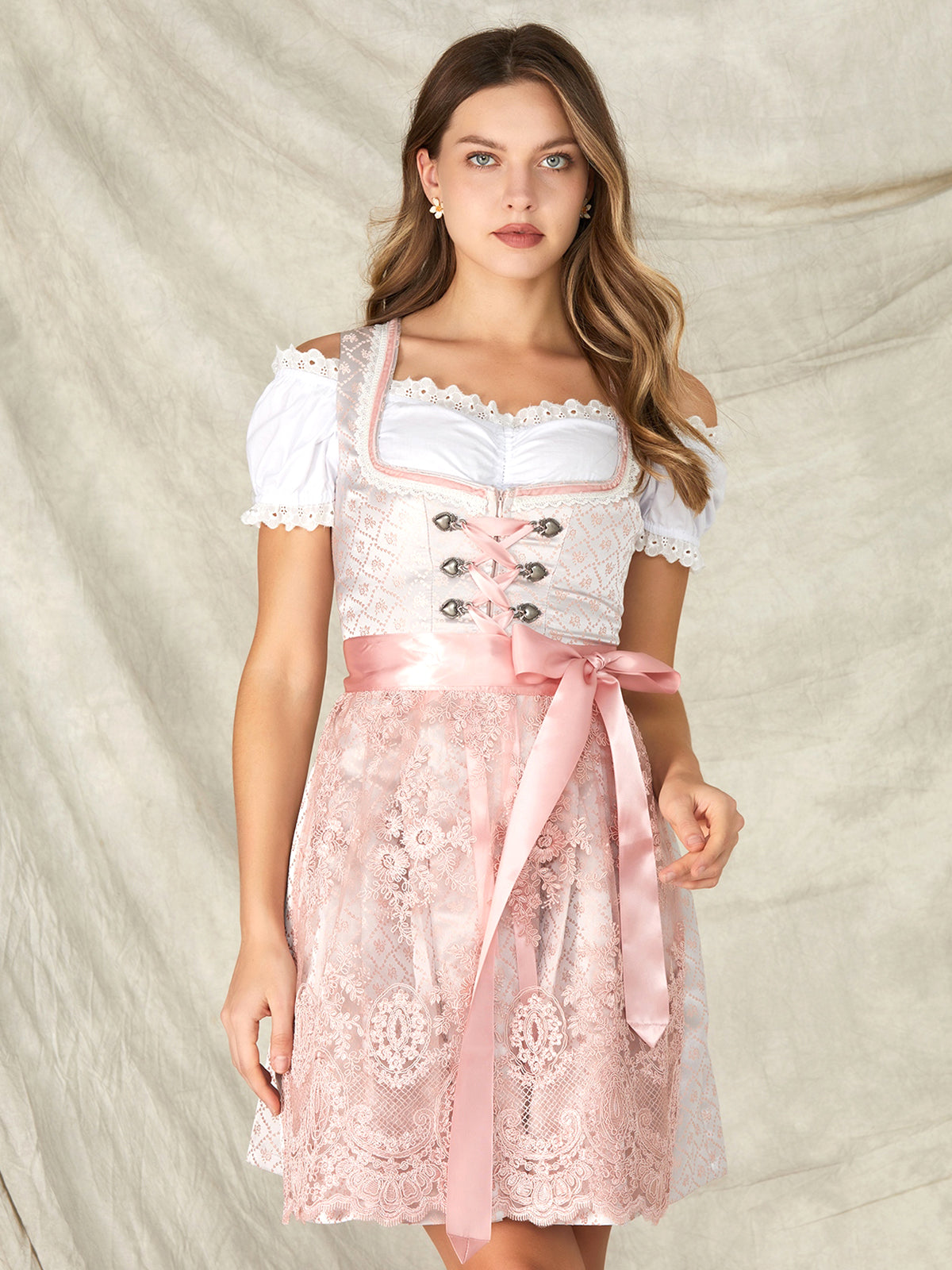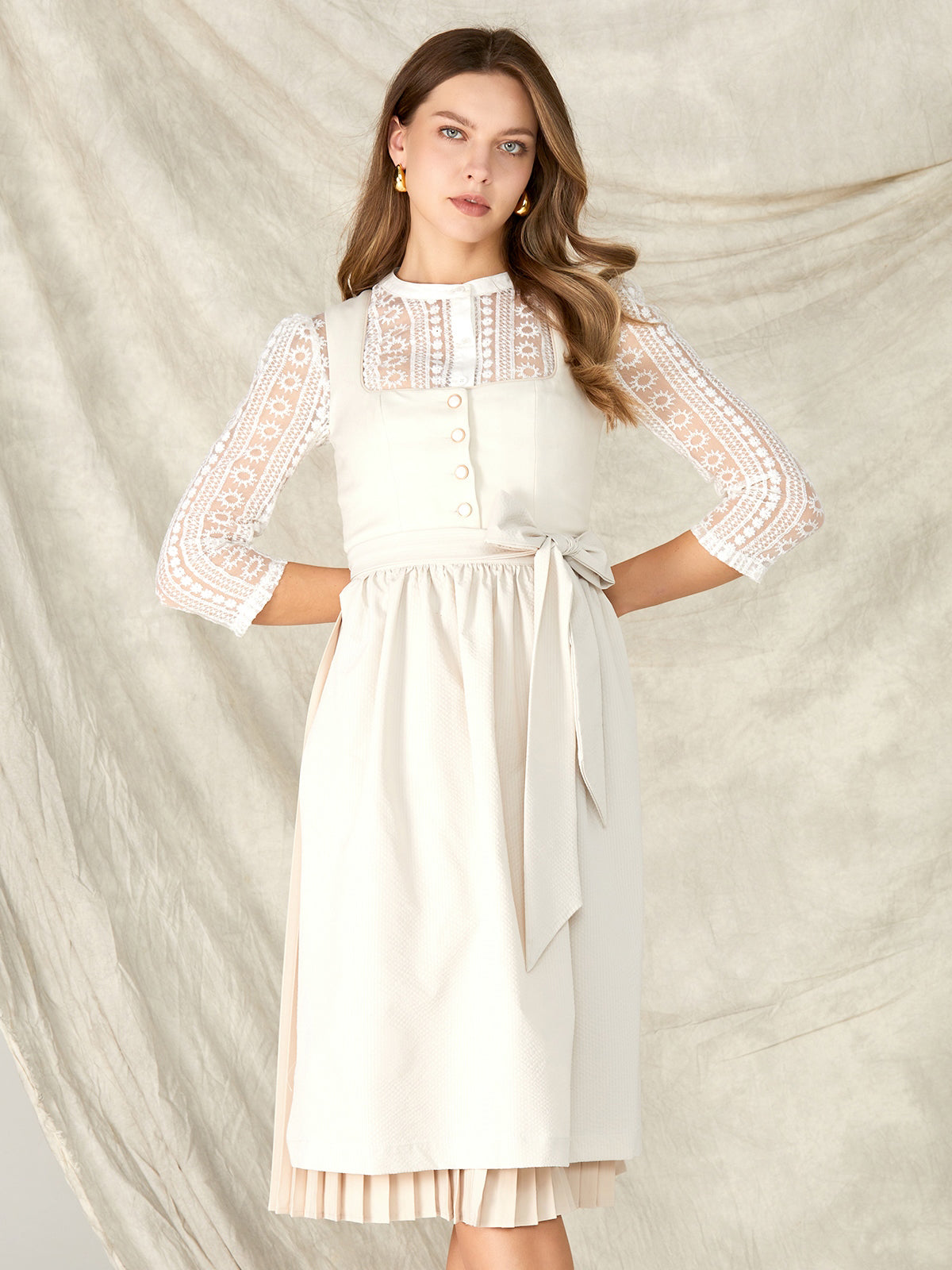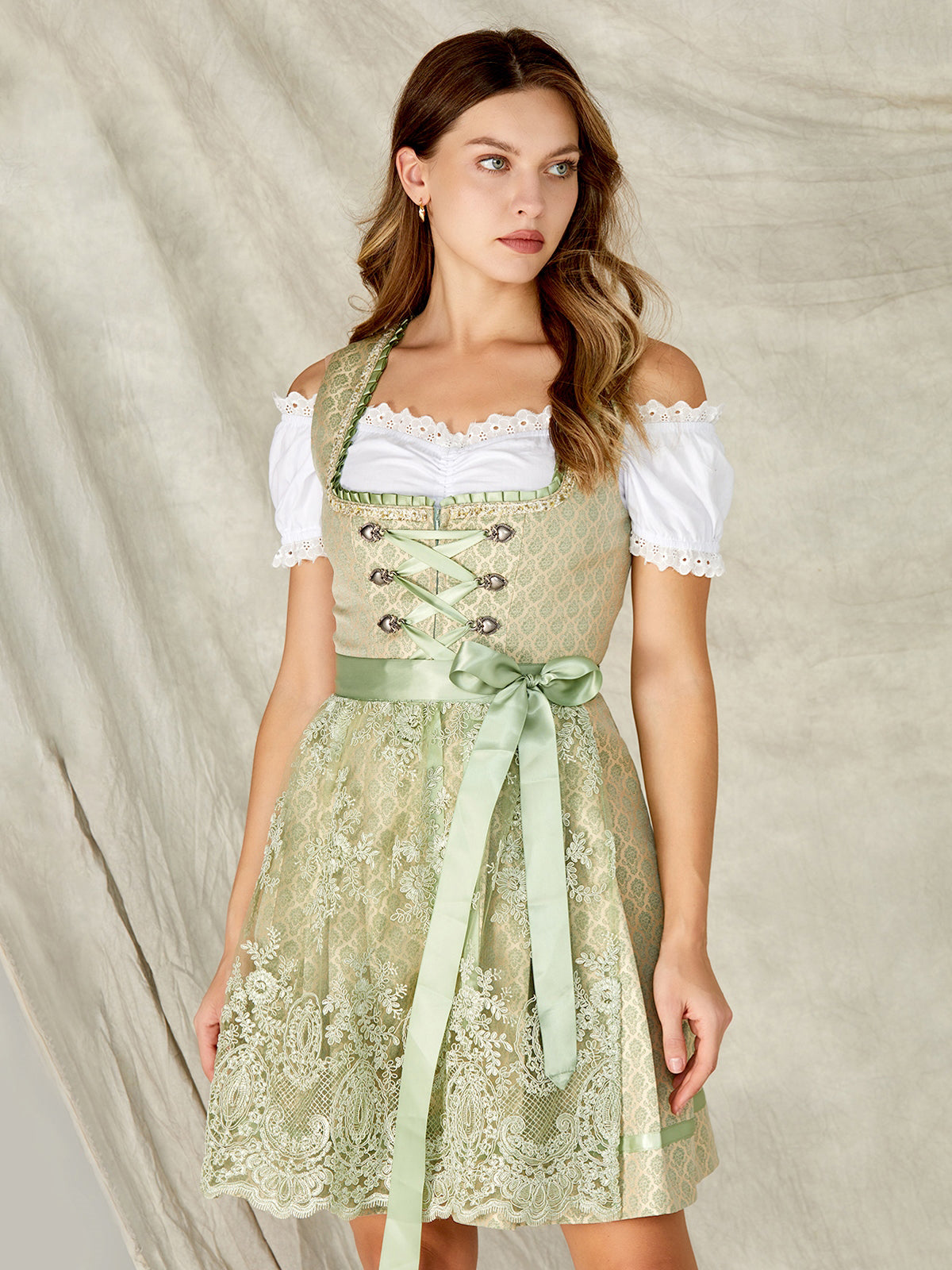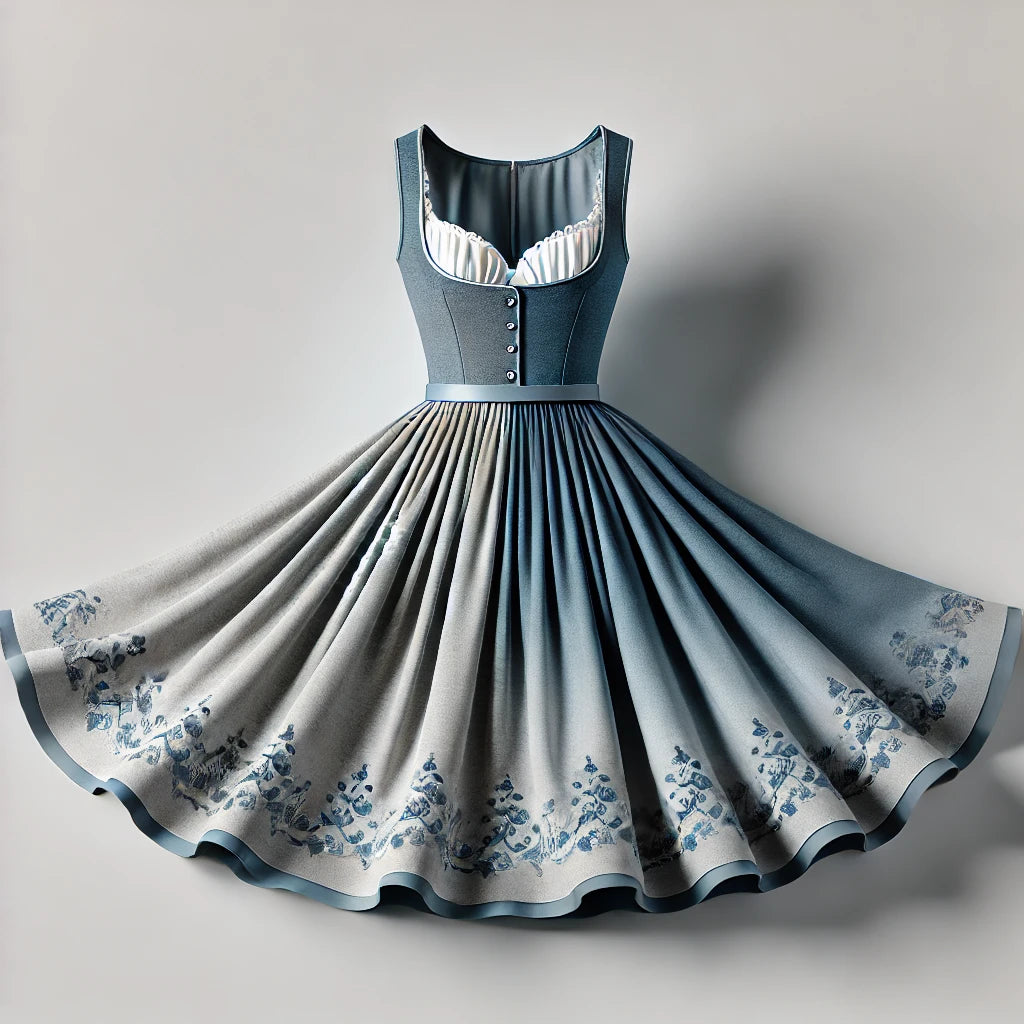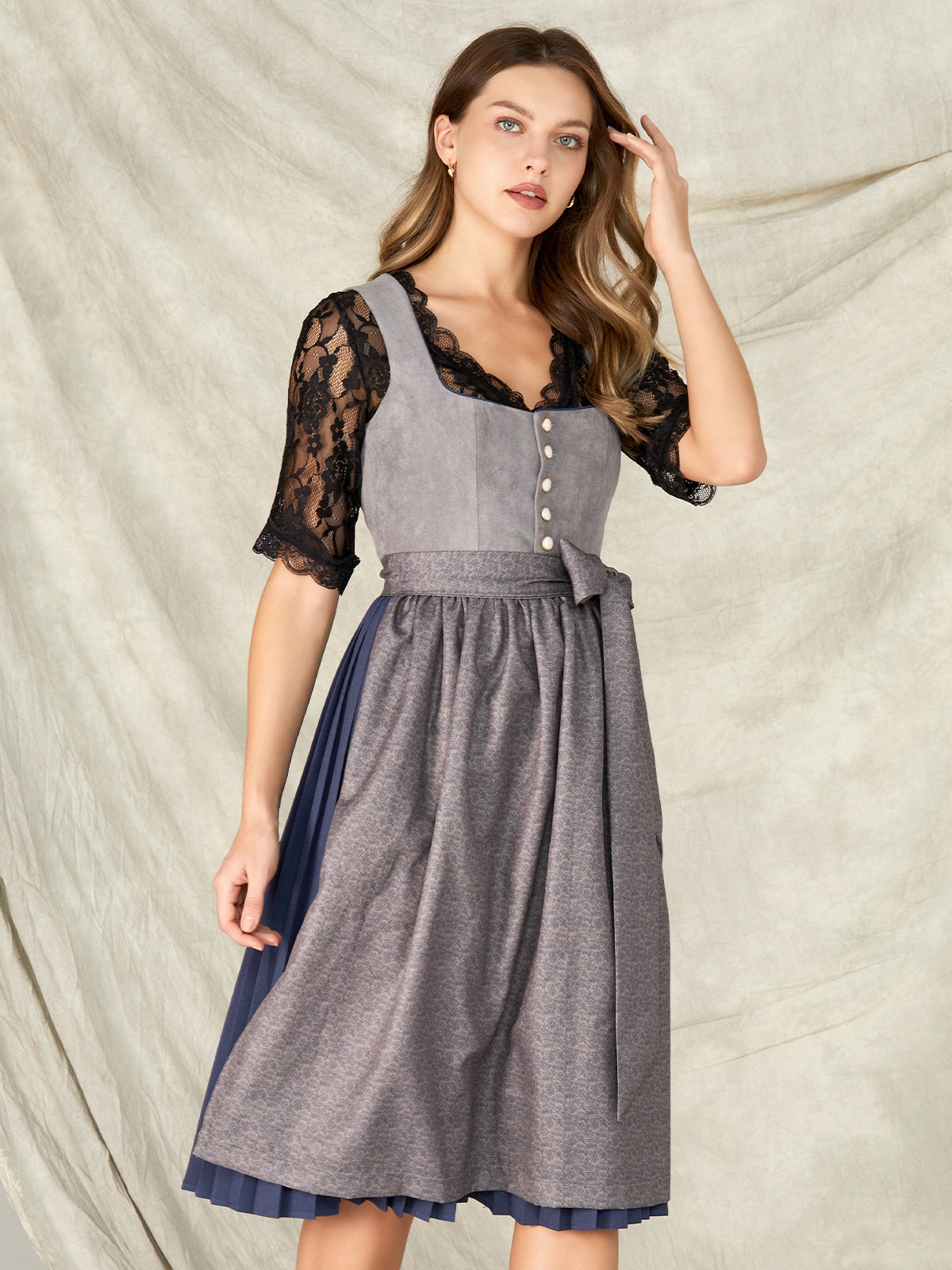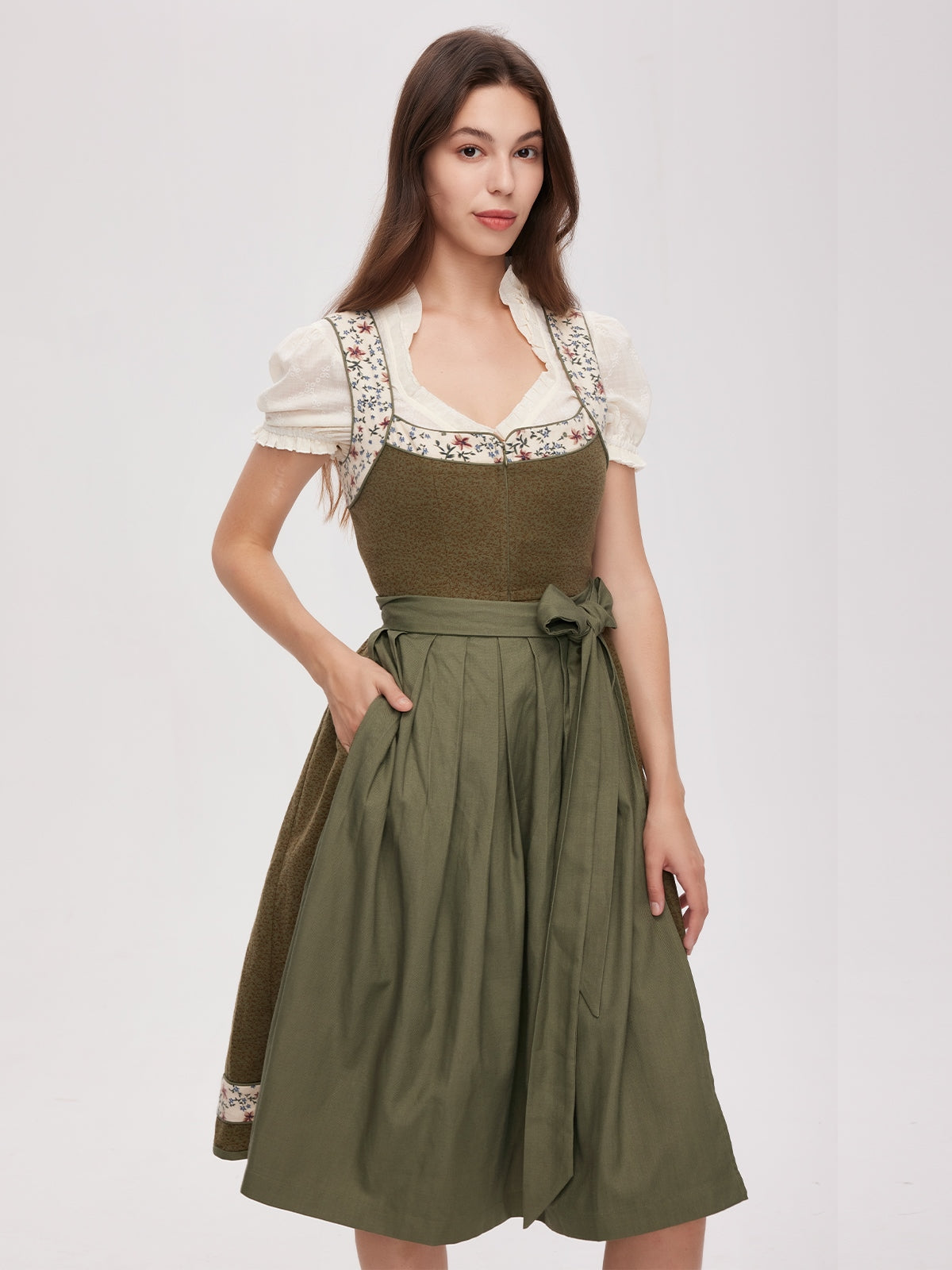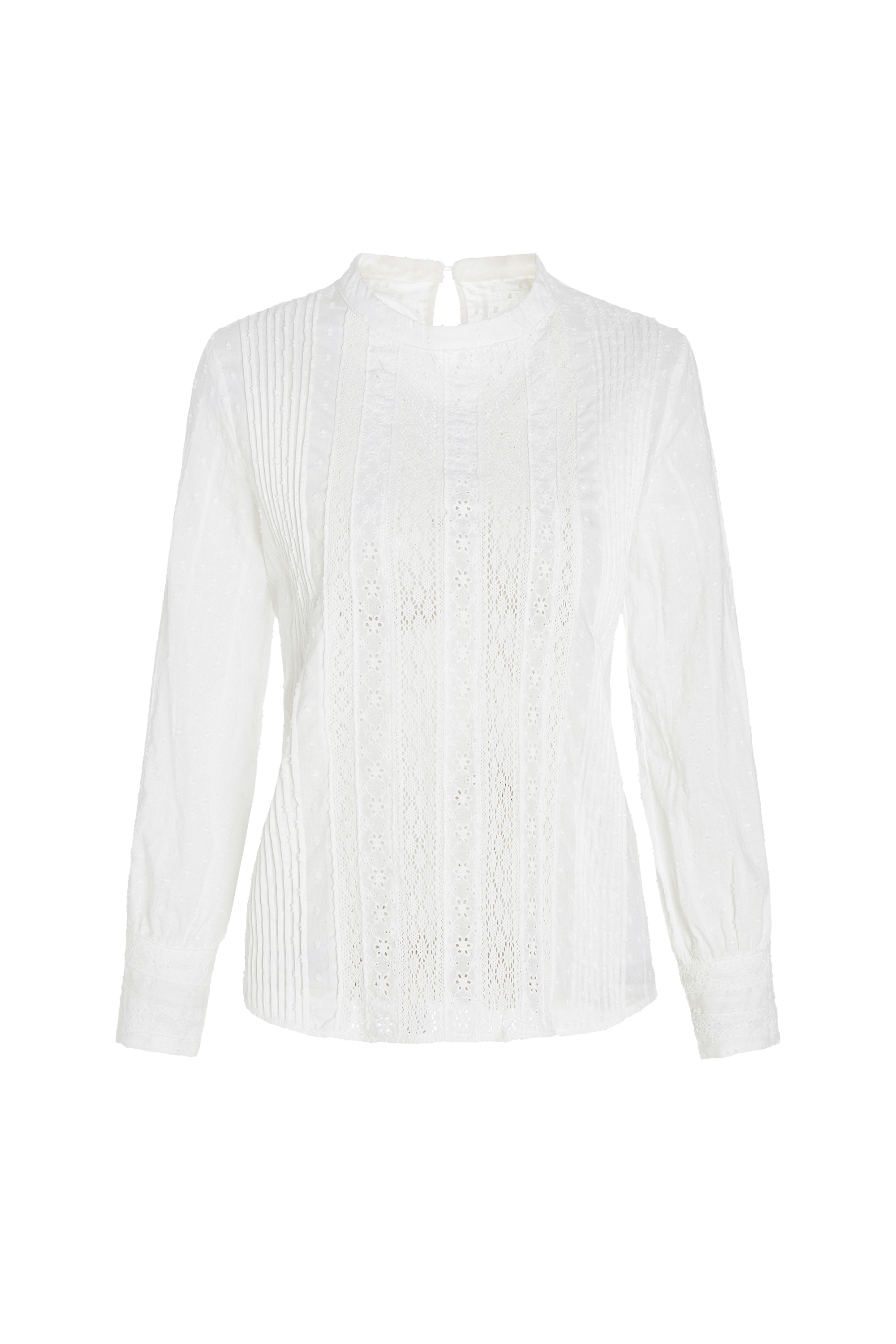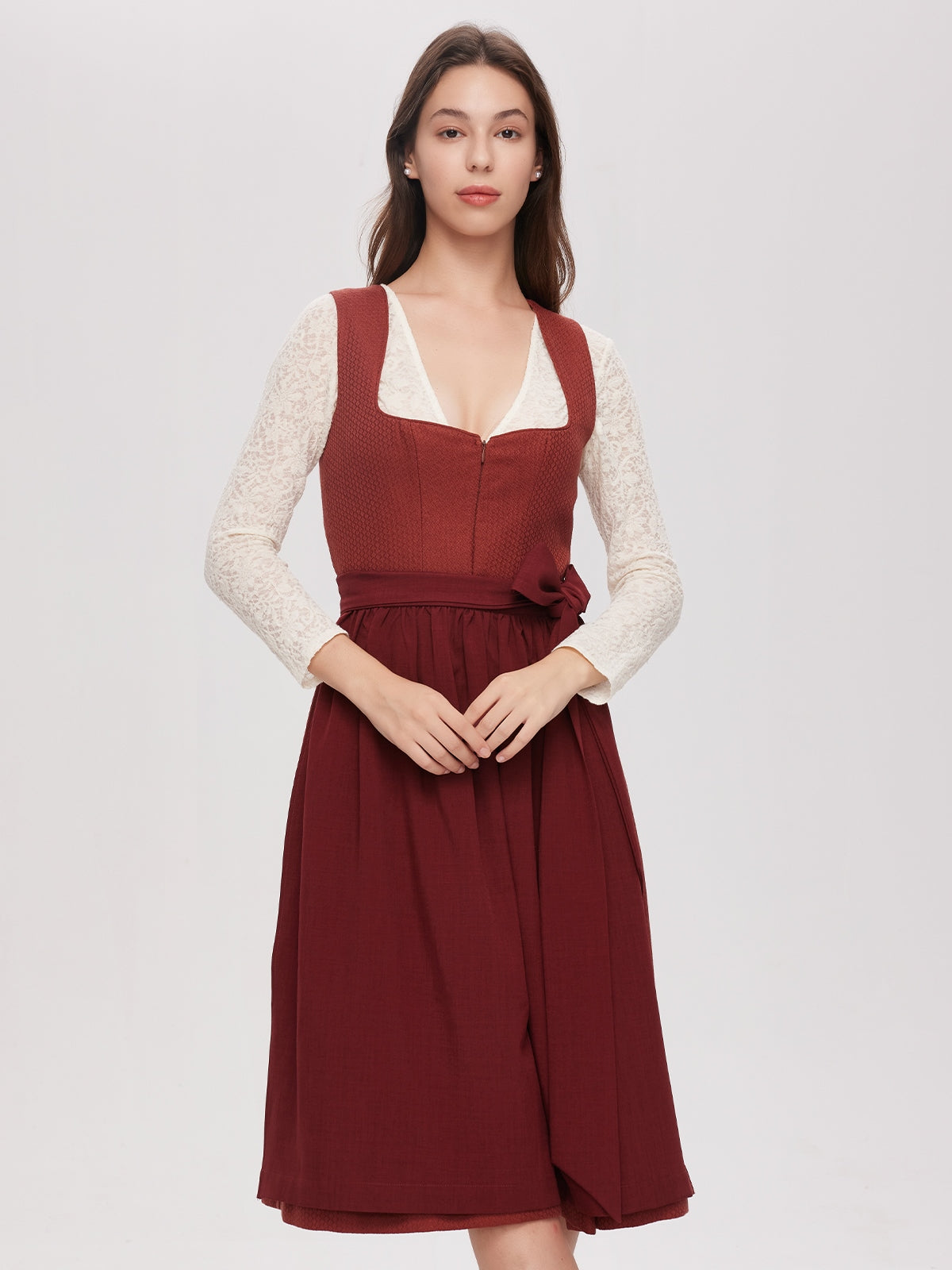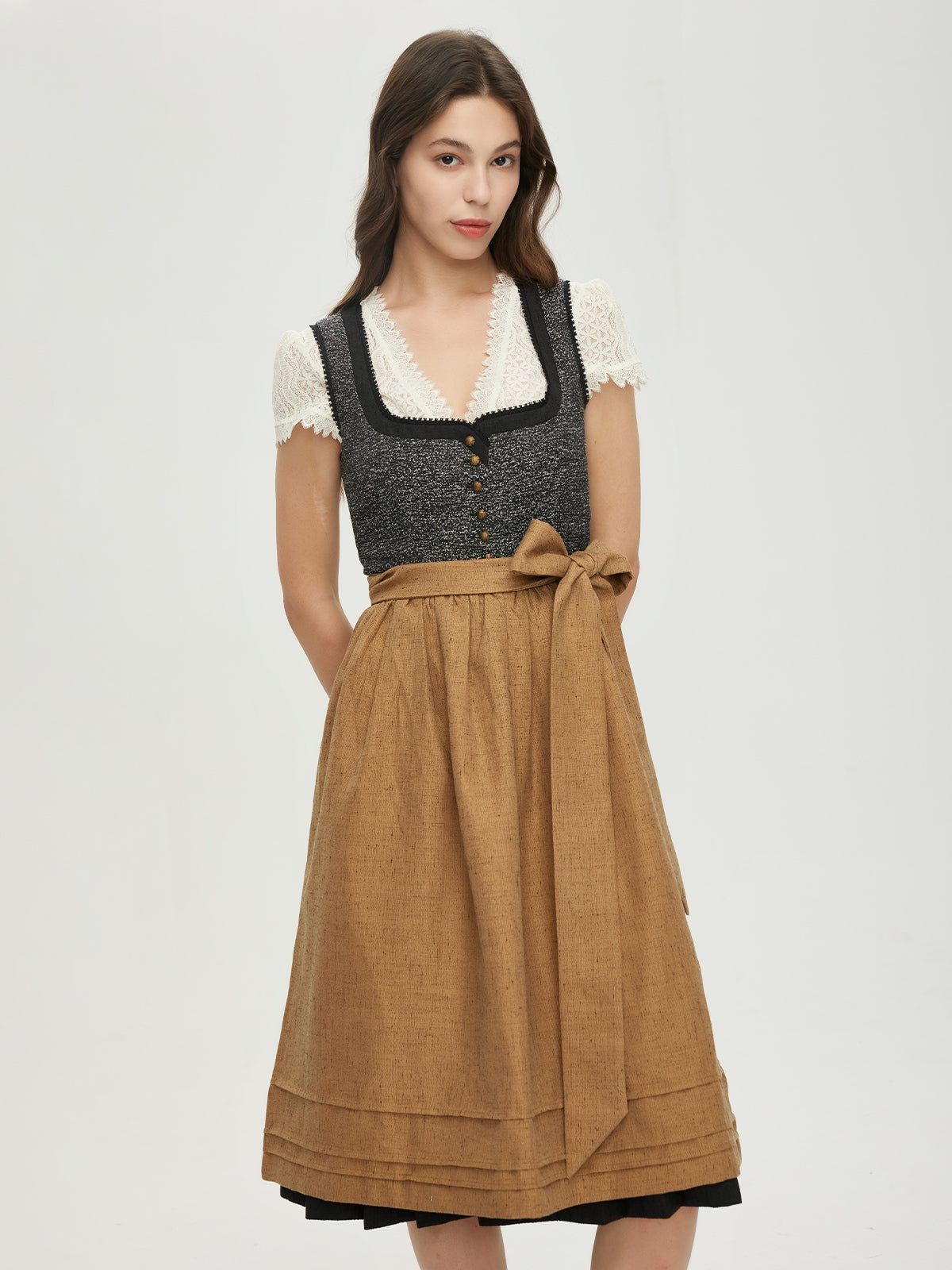Cart
0
The gray dirndl has become a real insider tip in traditional costume fashion in recent years. While bold colors like red or blue often take center stage, a gray dirndl impresses with its subtle elegance and versatility. The combination of gray and blue, as found in the blue-gray dirndl, is also particularly interesting. In this article, we take a closer look at the special features of these color variations and explain why they are the perfect choice for many women.
In addition to valuable tips and insights, we follow Hannah's story, whose decision to wear a gray dirndl sets her on an inner journey where she learns to accept herself and her style. Through inner monologues and emotional reflections, her story comes alive and offers a deep connection to readers who are going through similar experiences.
The simple elegance of a grey dirndl
Why choose a gray dirndl ? At first glance, gray may seem like an inconspicuous and perhaps even boring color. But a closer look quickly reveals the depth and versatility of this color. Gray exudes calm and restraint, while simultaneously appearing elegant and modern. For women seeking a classic yet modern traditional costume, a gray dirndl offers just the right balance between tradition and style.
Especially when combined with blue, as in the Blue-Gray Dirndl, a harmonious interplay of colors is created that is both festive and suitable for everyday wear. Blue represents stability and tranquility, while gray lends the outfit a modern, minimalist touch. This type of dirndl is perfect for festive occasions like Oktoberfest, weddings, or folk festivals, as well as for elegant evening events.
Hannah's Decision: An Inner Monologue
Hannah stood in front of the mirror, looking at herself in the gray dirndl she had just tried on. It was a simple cut, without any frills, but that was precisely what she liked about it. The gray made her pale eyes sparkle, while the subtle blue accents gave the dirndl a special touch. Still, she felt a certain insecurity.
"Is it too plain?" she wondered silently. Her friends all wore colorful, eye-catching dirndls that immediately caught the eye. But Hannah never felt comfortable in bright colors. She loved the simplicity and elegance of gray. "But what will the others think?" she continued to ask herself. She twirled in front of the mirror, smoothing the fabric of the gray dirndl, repeatedly running her hands over the soft fabric. It was calming to repeat this gentle movement, almost as if it could help her find clarity.
The repeated insecurity: inner conflicts and self-doubt
Hannah repeatedly found herself wondering if her decision to wear the gray dirndl was really the right one. "Gray is so inconspicuous," she thought. "Will I be overlooked in it?" But at the same time, she knew deep down that the dirndl suited her perfectly. It wasn't loud, it didn't demand attention—it was calm, elegant, and timeless. Just as she wanted it to be.
She remembered previous occasions when she had felt uncomfortable in more colorful dirndls. Every time she wore a bold dirndl, she felt like she was playing a role that wasn't truly her own. "Why should I force myself into a color that doesn't suit me?" she thought, stroking the fabric of the gray dirndl again. This simple movement gave her a sense of security and control over her decision.
A decision with deep emotions: The moment of realization
It was the evening before the party, and Hannah stood in front of the mirror again. She was wearing the blue-gray dirndl she had chosen for the upcoming event. The blue and gray harmonized perfectly, and for the first time in a long time, she felt comfortable in her skin and her clothes. But insecurity still gnawed at her.
"What if I make the wrong decision?" she asked herself again. But this time the answer was different. "It's my dirndl, my choice. I have to feel comfortable in it, and I do." This realization came suddenly, almost unexpectedly. Hannah had finally found the courage to accept her own decision and no longer allow herself to be influenced by the opinions of others.
With a deep breath, she straightened up, looked at herself in the mirror one last time, and smiled. "This is exactly what I want," she whispered to herself as she stroked the soft fabric of the gray dirndl again, almost as if she wanted to reassure herself with this gesture that her decision was the right one.
The Importance of Repetition: A Calming Ritual
Hannah's repetitive movements—smoothing the fabric, twirling in front of the mirror, stroking the dirndl—were more than just nervousness. It was her way of overcoming insecurity and committing to a decision. These repetitions helped her calm herself and build confidence in her choice.
There was a deeper meaning in this repetitive action. It symbolized her inner process, the constant re-examination of her decision until she finally reached the clarity she was seeking. The gray dirndl was not just a fashionable choice, but also a reflection of her own development and the courage to stand up for herself.
A light tone: The ease of decision
On the morning of the festival, Hannah felt an unexpected lightness. She had chosen the blue-gray dirndl and felt confident in her choice. The deep insecurities that had plagued her just a few hours earlier had vanished. She laughed quietly at herself as she remembered how much she had doubted herself. "Because of a dirndl?" she thought, smiling. "It's just a dress!"
But deep down, she knew it was about more. The gray dirndl had helped her realize that she had the freedom to make her own decisions, regardless of what others expected of her. She felt free, light, and happy. "It's all good," she told herself again as she closed the door behind her and walked toward the party.
Conclusion: The subtle power of the grey dirndl
A gray dirndl may appear simple and understated at first glance, but that's precisely where its strength lies. It's elegant, timeless, and offers women the opportunity to express their inner calm and strength. Especially when combined with blue, as in the blue-gray dirndl, a harmonious interplay is created that appears both festive and modern.
For women like Hannah, who often feel influenced by the expectations of others, choosing a gray dirndl can be a liberating experience. It's not just about wearing a beautiful dress, but about staying true to yourself and finding the freedom to make your own decisions. The gray dirndl is more than just a fashionable garment—it's a symbol of inner strength and self-acceptance.
In addition to valuable tips and insights, we follow Hannah's story, whose decision to wear a gray dirndl sets her on an inner journey where she learns to accept herself and her style. Through inner monologues and emotional reflections, her story comes alive and offers a deep connection to readers who are going through similar experiences.
The simple elegance of a grey dirndl
Why choose a gray dirndl ? At first glance, gray may seem like an inconspicuous and perhaps even boring color. But a closer look quickly reveals the depth and versatility of this color. Gray exudes calm and restraint, while simultaneously appearing elegant and modern. For women seeking a classic yet modern traditional costume, a gray dirndl offers just the right balance between tradition and style.
Especially when combined with blue, as in the Blue-Gray Dirndl, a harmonious interplay of colors is created that is both festive and suitable for everyday wear. Blue represents stability and tranquility, while gray lends the outfit a modern, minimalist touch. This type of dirndl is perfect for festive occasions like Oktoberfest, weddings, or folk festivals, as well as for elegant evening events.
Hannah's Decision: An Inner Monologue
Hannah stood in front of the mirror, looking at herself in the gray dirndl she had just tried on. It was a simple cut, without any frills, but that was precisely what she liked about it. The gray made her pale eyes sparkle, while the subtle blue accents gave the dirndl a special touch. Still, she felt a certain insecurity.
"Is it too plain?" she wondered silently. Her friends all wore colorful, eye-catching dirndls that immediately caught the eye. But Hannah never felt comfortable in bright colors. She loved the simplicity and elegance of gray. "But what will the others think?" she continued to ask herself. She twirled in front of the mirror, smoothing the fabric of the gray dirndl, repeatedly running her hands over the soft fabric. It was calming to repeat this gentle movement, almost as if it could help her find clarity.
The repeated insecurity: inner conflicts and self-doubt
Hannah repeatedly found herself wondering if her decision to wear the gray dirndl was really the right one. "Gray is so inconspicuous," she thought. "Will I be overlooked in it?" But at the same time, she knew deep down that the dirndl suited her perfectly. It wasn't loud, it didn't demand attention—it was calm, elegant, and timeless. Just as she wanted it to be.
She remembered previous occasions when she had felt uncomfortable in more colorful dirndls. Every time she wore a bold dirndl, she felt like she was playing a role that wasn't truly her own. "Why should I force myself into a color that doesn't suit me?" she thought, stroking the fabric of the gray dirndl again. This simple movement gave her a sense of security and control over her decision.
A decision with deep emotions: The moment of realization
It was the evening before the party, and Hannah stood in front of the mirror again. She was wearing the blue-gray dirndl she had chosen for the upcoming event. The blue and gray harmonized perfectly, and for the first time in a long time, she felt comfortable in her skin and her clothes. But insecurity still gnawed at her.
"What if I make the wrong decision?" she asked herself again. But this time the answer was different. "It's my dirndl, my choice. I have to feel comfortable in it, and I do." This realization came suddenly, almost unexpectedly. Hannah had finally found the courage to accept her own decision and no longer allow herself to be influenced by the opinions of others.
With a deep breath, she straightened up, looked at herself in the mirror one last time, and smiled. "This is exactly what I want," she whispered to herself as she stroked the soft fabric of the gray dirndl again, almost as if she wanted to reassure herself with this gesture that her decision was the right one.
The Importance of Repetition: A Calming Ritual
Hannah's repetitive movements—smoothing the fabric, twirling in front of the mirror, stroking the dirndl—were more than just nervousness. It was her way of overcoming insecurity and committing to a decision. These repetitions helped her calm herself and build confidence in her choice.
There was a deeper meaning in this repetitive action. It symbolized her inner process, the constant re-examination of her decision until she finally reached the clarity she was seeking. The gray dirndl was not just a fashionable choice, but also a reflection of her own development and the courage to stand up for herself.
A light tone: The ease of decision
On the morning of the festival, Hannah felt an unexpected lightness. She had chosen the blue-gray dirndl and felt confident in her choice. The deep insecurities that had plagued her just a few hours earlier had vanished. She laughed quietly at herself as she remembered how much she had doubted herself. "Because of a dirndl?" she thought, smiling. "It's just a dress!"
But deep down, she knew it was about more. The gray dirndl had helped her realize that she had the freedom to make her own decisions, regardless of what others expected of her. She felt free, light, and happy. "It's all good," she told herself again as she closed the door behind her and walked toward the party.
Conclusion: The subtle power of the grey dirndl
A gray dirndl may appear simple and understated at first glance, but that's precisely where its strength lies. It's elegant, timeless, and offers women the opportunity to express their inner calm and strength. Especially when combined with blue, as in the blue-gray dirndl, a harmonious interplay is created that appears both festive and modern.
For women like Hannah, who often feel influenced by the expectations of others, choosing a gray dirndl can be a liberating experience. It's not just about wearing a beautiful dress, but about staying true to yourself and finding the freedom to make your own decisions. The gray dirndl is more than just a fashionable garment—it's a symbol of inner strength and self-acceptance.

